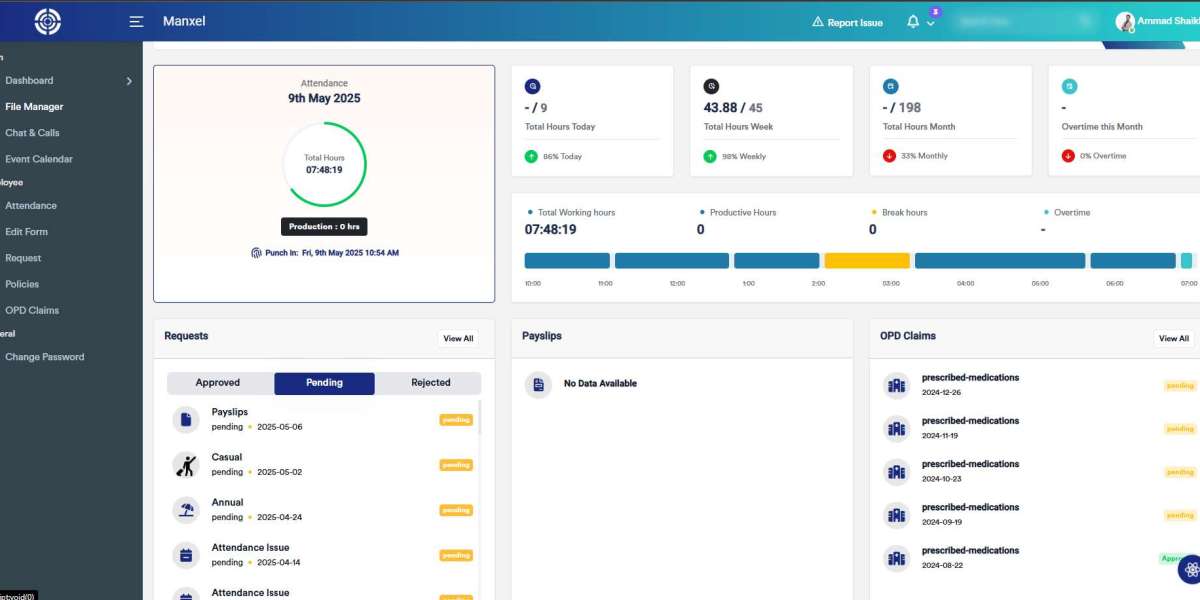Introduction
In today’s rapidly evolving business landscape, organizations face increasing pressure to optimize their workforce management. Traditional HR processes—reliant on spreadsheets, paper-based records, and manual data entry—are no longer sustainable. Enter Human Resource Management Systems (HRMS), a transformative technology that automates, streamlines, and enhances HR operations.
This definitive guide explores every facet of HRMS, from its fundamental definition to advanced features, implementation strategies, and future trends. Whether you're an HR professional, a business owner, or an IT decision-maker, this deep dive will equip you with actionable insights to leverage HRMS for maximum efficiency.
- Understanding HRMS: Definition, Evolution, and Key Components
What is an HRMS?
A Human Resource Management System (HRMS) is an integrated software platform that consolidates HR functions into a unified digital ecosystem. Unlike standalone HR tools, an HRMS provides end-to-end automation for:
- Payroll processing
- Recruitment and onboarding
- Time and attendance tracking
- Performance management
- Employee self-service (ESS) portals
- Compliance and reporting
The Evolution of HRMS
HRMS has evolved significantly over the decades:
- 1980s-1990s:Basic HRIS (Human Resource Information Systems) for employee data storage.
- 2000s:Introduction of payroll automation and talent management modules.
- 2010s:Cloud-based HRMS with mobile accessibility.
- 2020s:AI-driven predictive analytics, blockchain for secure records, and voice-activated HR assistants.
HRMS vs. HRIS vs. HCM: Key Differences
While often used interchangeably, these terms have distinct meanings:
- HRIS (Human Resource Information System):Focuses on data management (employee records, payroll).
- HRMS (Human Resource Management System):Expands to workforce automation (attendance, recruitment).
- HCM (Human Capital Management):Encompasses strategic talent development (learning, succession planning).
Why Modern Businesses Need HRMS
- Reduces administrative workloadby up to 60% (Deloitte).
- Improves compliance accuracywith real-time regulatory updates.
- Enhances employee engagementthrough self-service tools.
- Core Features of a Modern HRMS
- Payroll Automation
Payroll errors cost businesses $6 billion annually (IRS). A robust HRMS eliminates these risks by:
- Auto-calculatingtaxes, overtime, and deductions.
- Generating digital payslipswith direct deposit options.
- Integrating with accounting software(QuickBooks, Xero).
Example: Manxel HRMS reduces payroll processing time by 75% through AI-powered audits.
- Recruitment & Onboarding
- AI-driven candidate screening(resume parsing, skill assessments).
- Automated offer letterswith e-signature capabilities.
- Personalized onboarding checklistsfor new hires.
- Employee Self-Service (ESS) Portal
Empowers employees to:
- View pay stubs and tax documents.
- Submit leave requests and shift swaps.
- Update personal details(address, bank info).
- Performance Management
- 360-degree feedbackfrom peers and managers.
- Goal-tracking dashboardswith KPIs.
- Automated performance review cycles.
- Compliance & Reporting
- Auto-updatesfor labor laws (GDPR, FLSA).
- Custom audit trailsfor litigation protection.
- Real-time analyticson turnover, diversity, and more.
- The Business Case for HRMS: ROI and Case Studies
Cost Savings
- Small businessessave $20K–$50K/year by eliminating manual HR tasks.
- Mid-sized firmsreduce payroll errors by 90% (PwC).
Case Study: Tech Startup (200 Employees)
Challenge | HRMS Solution | Outcome |
Manual payroll errors | Automated calculations | 70% fewer errors |
Slow onboarding | Digital workflows | 50% faster hiring |
Low engagement | Mobile ESS portal | 30% higher retention |
- Implementing HRMS: A Step-by-Step Guide
Step 1: Needs Assessment
- Identify pain points (e.g., payroll delays, compliance risks).
- Define must-have features (e.g., multi-country payroll, AI analytics).
Step 2: Vendor Selection
Compare top solutions like:
- Manxel HRMS(best for SMEs)
- Workday(enterprise-grade)
- BambooHR(user-friendly interface)
Step 3: Data Migration & Training
- Import employee records from legacy systems.
- Conduct live training sessionsfor HR teams.
Step 4: Continuous Optimization
- Monitor user adoption rates.
- Gather employee feedbackfor improvements.
- The Future of HRMS (2024–2030)
- AI-Powered Predictive Analytics:Forecast turnover risks.
- Blockchain for Secure Records:Tamper-proof employee data.
- Voice-Activated HR Assistants:"Hey HR, submit my leave request."
Conclusion: Is HRMS Right for Your Business?
If your organization struggles with:
❌ Time-consuming HR tasks
❌ Compliance vulnerabilities
❌ Low employee satisfaction
An HRMS like Manxel (http://manxel.com/products/hrms/) can automate workflows, cut costs, and future-proof your HR operations.


